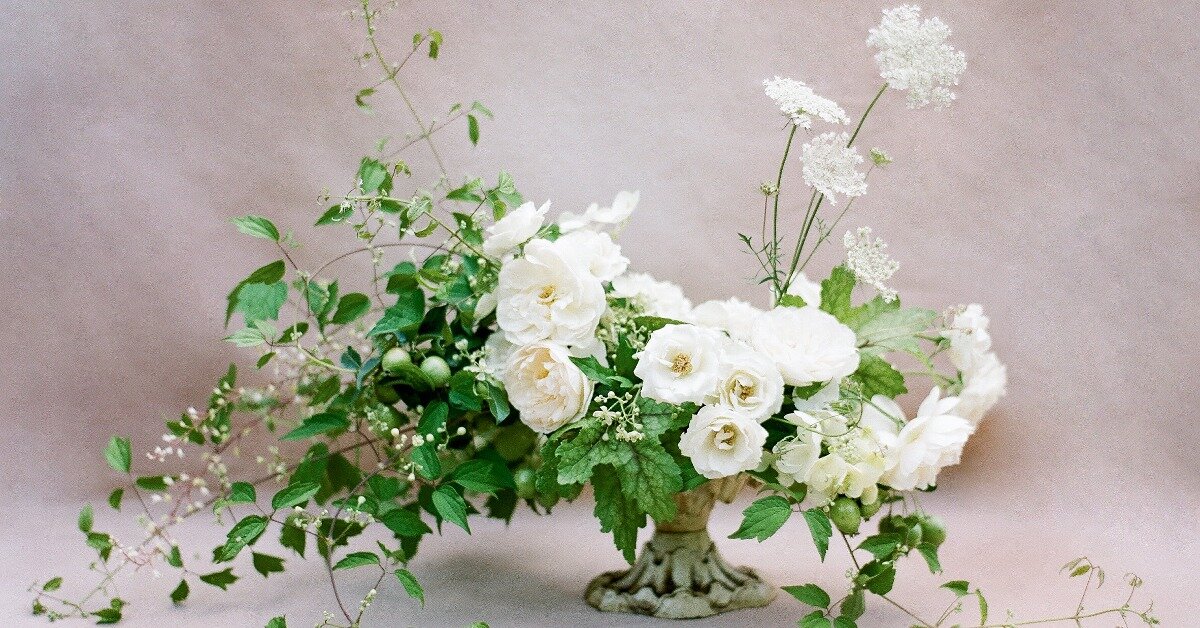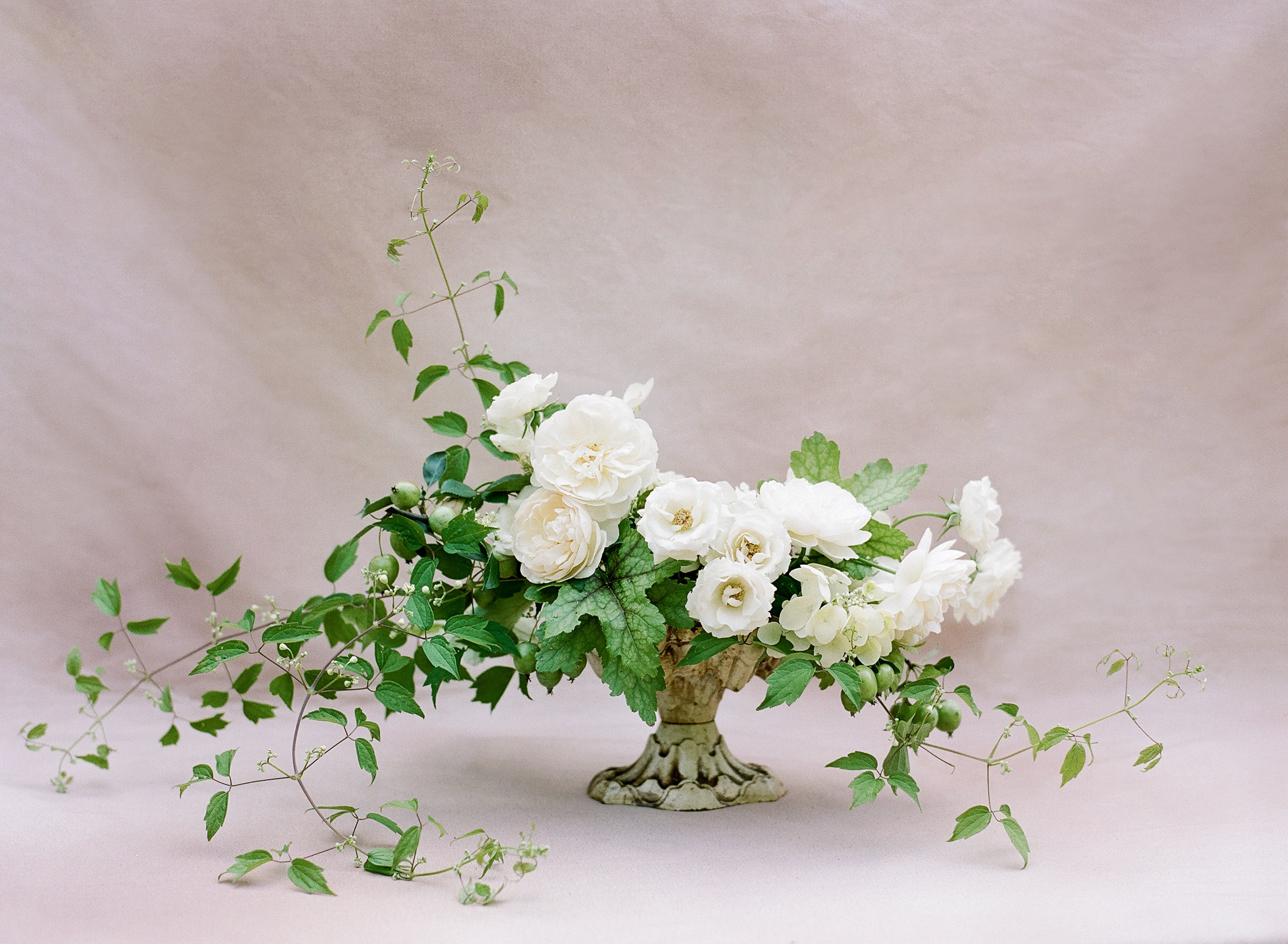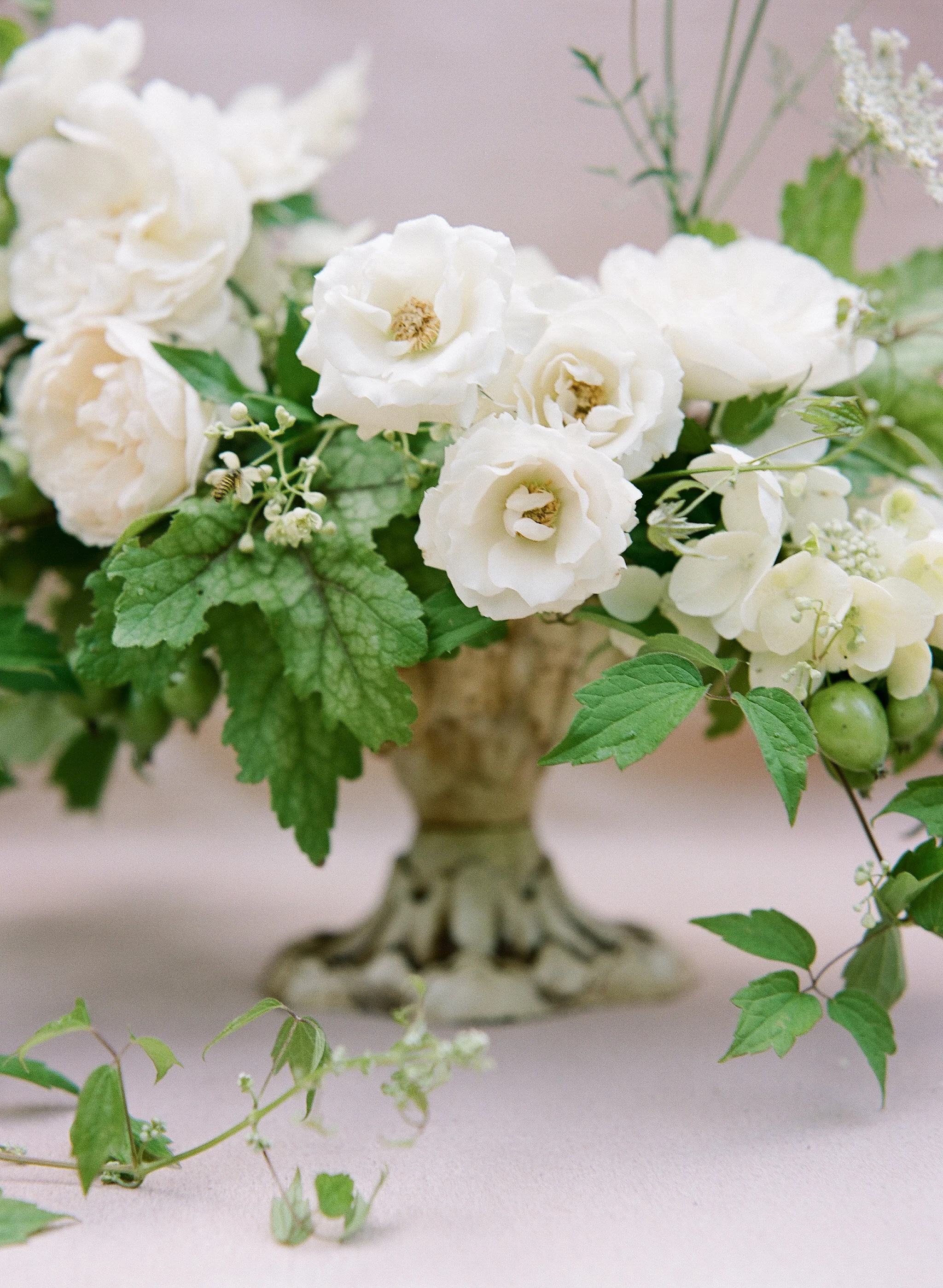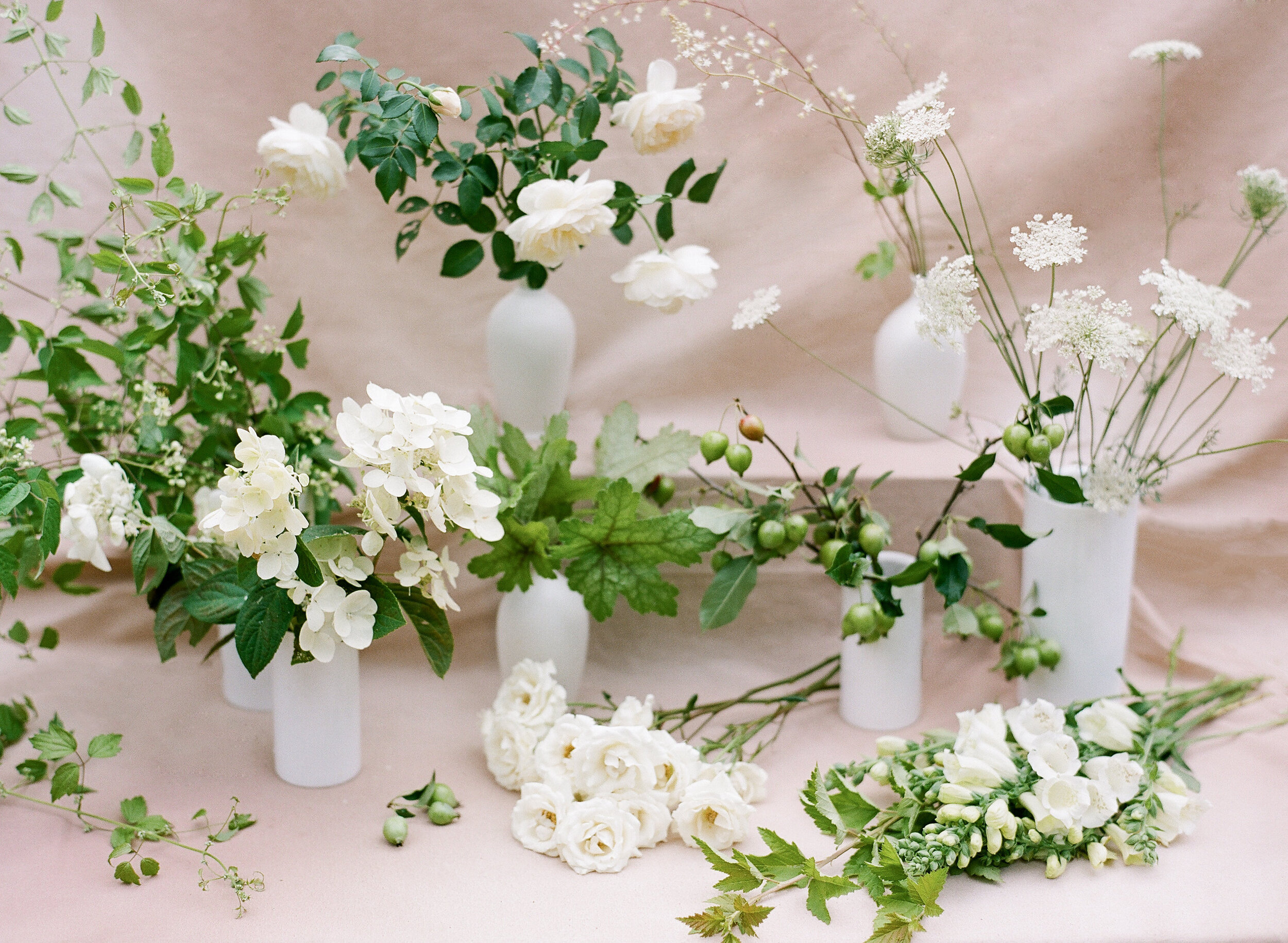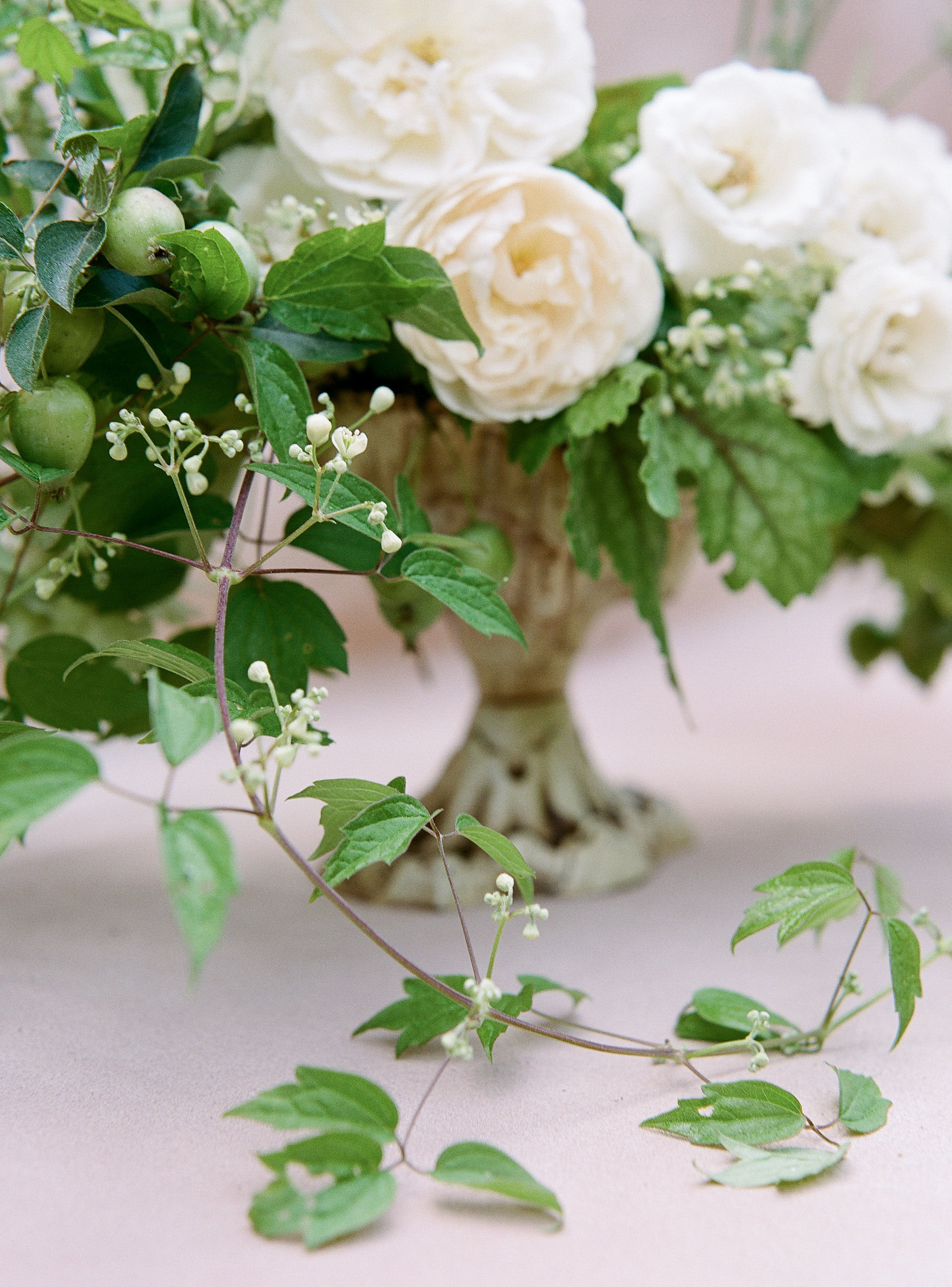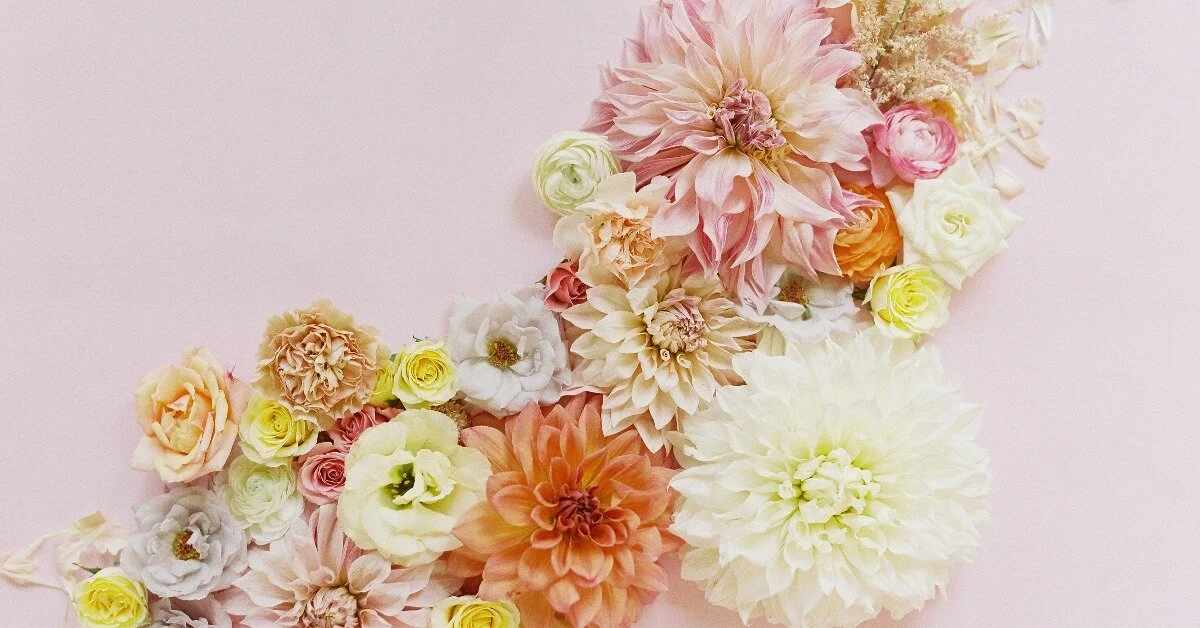How to Become a Florist: Your Complete Guide (With Advice from the Pros)
You’ve been wondering if working in flowers is right for you—maybe you’re thinking through how to be a florist or how to become a floral designer.
Here’s the good news: Everyone starts at the very beginning, and we’re here to help. In this guide, you’ll get what you need to leap into working with flowers.
In addition to getting practical advice from real floral designers in this article, you’ll also cover the following:
Is working in floral design for you?
Key benefits to working in floristry
How to get started in floral design with no experience
What qualifications are needed to be a florist
Is owning your own floral business right for you?
Resources can help you get started today (like, right now!)
This article is a comprehensive guide, so we’ve created chapters for you to jump ahead if needed.
You can start from the beginning—or skip ahead to what you need right now using the table of contents below.
Everyone starts at the beginning when becoming a floral designer!
How to Become a Florist: Step by Step Chapter Links
So what does it take to be a florist? Let’s dive in, step by step. Click or tap to jump ahead if needed.
Step 1: Determine why you want to work in flowers
Step 2: Research and educate yourself
Step 3: Volunteer or apprentice with a local floral designer
Step 4: Practice your floral design skills
Step 5: Move forward in flowers—one step at a time
Step 1: Determine why you want to be a florist
Discover why you want to become a florist. Don’t skip this step!
Determining your why is an important first step on your flower journey. Sure, flowers are beautiful, playful, and romantic, but they’ve got a deeper meaning and purpose.
Flowers help us honor important occasions in our lives (like weddings, birthdays, and anniversaries). But studies have also shown that having fresh flowers nearby can help boost our creativity and enthusiasm, increase feelings of compassion, and reduce feelings of anxiety and depression (1).
Flowers have a pretty important job to do!
And floral professionals—florists, studio designers, farmers, wholesalers, and more—are the vital people who grow and arrange the delightful blossoms that add so much joy and beauty to our world.
Hear from a few floral designers below about their experience working with flowers:
“Working in flowers brings me peace and a sense of purpose. I take pride in providing a service and a product that is unique and beautiful. I do my best thinking in the garden and get both intrinsic and extrinsic satisfaction every time I look up from a flower bed.” — Jalisca Thomason, Floral Designer, Micro-Farmer, and Owner at Rustic Roots Floral Design, @rusticrootsfloraldesign
“A career in flowers offers potential for growth and scalability of business. It’s also very agile, robust, and—of course—creative, which I really missed in my previous career!” — Michal Kowalski, Floral Designer and Owner of Blooming Haus, @bloominghaus
“In working with flowers, I’ve been most surprised by how genuinely thankful people are for quality, locally sourced flowers. My farmers’ market customers gush over fresh Bells of Ireland. They giggled when the first wave of dahlias showed up. I thought people might like them, but they LOVE them enough to smash their faces into their bouquet right after buying it!” — Kaley Deffinbaugh, Farmer and Owner at Long Table Farms, @longtablefarms
Before you decide to take your first steps to become a floral designer, you’ll need to determine your why:
Why are you passionate about working in floral work? What is your mission?
Take time to brainstorm your why: It’s the truth you’ll hang on to when your life with flowers presents challenges and feels more like work and less like creative play.
However, even when your hands and feet are tired and your email inbox needs serious attention, there are still many benefits to working in floral design.
5 key benefits to being in floristry
Becoming a floral designer is hard work, but it also has many advantages.
You’ll have opportunities for self-employment (and that coveted flexible schedule—if you decide to start your own business).
You’ll experience a greater connection to nature and the environment.
You’ll get to be a part of meaningful moments in your clients’ lives and show love to people in your community (weddings, birthdays, memorials, anniversaries, and more!).
You’ll get to do creative work or help others do creative work—and that’s good for the spirit.
You’ll have opportunities for physical movement, time outside, and meeting interesting people.
Check out the Team Flower Podcast to hear real stories and helpful tips from floral professionals, including our talk with Hitomi Gilliam on beginning and evolving in floristry.
How do you know if you should become a florist?
Maybe you’re thinking about trading in your accounting career for something more creative. Or perhaps you’ve entered a season in life where you need something that’s as flexible as it is challenging.
Whatever your reason is for becoming a floral designer, you’ve found a home here at Team Flower! Learn how we can help you start a career in floral design.
Ultimately, deciding if you should become a florist takes some thought, research, and practice. Many floral professionals start with a floral design side-hustle, growing their career from there.
“The best way to see if something is right for you is to physically attempt it…. Go buy some greens and blooms, and then try to make something. Take a class from your local florist. Or better yet, take a Team Flower class!” — Grace McDonald, Floral Designer and Owner of Flower Clvb, @flowerclvb
“If you have the stamina for long days on your feet, if you don't mind dealing with gross rotting botanical material... if you can stay poised during awkward interactions with clients... if you can work gracefully in conjunction with other vendor teams in high-pressure situations, if you're okay with the fact that actually playing with flowers might only be 25–45% of your time and the rest will be administrative and customer service work... and if you still wake up wanting to do it all over again the day after an event, go for it. You have the right stuff!” — Hanna Lowery, Floral Designer and Owner of Edges Wild Studio, @edgeswildstudio
5 reasons you might be a good fit for a floral design career:
You’re not afraid of hard physical work—or getting dirty (especially if you want to become a flower farmer, but this advice is for future designers, too!).
You’re an organized self-starter: You can problem-solve, send detailed invoices and proposals, pay taxes, plan ahead, and resolve conflict like a true pro.
You’re naturally caring and love serving people—floral design, wholesale, retail, and farming are all about customer service, after all. Making people light up with joy when they see beautiful blossoms is where the magic’s at.
You can navigate stressful situations with grace and resolve issues on the fly. Wedding and event design work can be difficult, and sometimes your clients will be shaken by nerves and stress. In addition, if you do retail floral work, you may be serving clients in the middle of loss. Add in that flower availability can literally change with the weather, and that’s quite the challenging mix! Your role is to stay calm and handle changing circumstances with grace.
You absolutely love flowers—and would love working with them even if it means your time is spent 20% playing with flowers and 80% on business operations (and often, it is!)
Step 2: How do you get started as a florist with no experience? Educate yourself!
Becoming a florist is a lot like creating an arrangement—it takes several steps and multiple ingredients.
So you’ve decided floral design work is for you—but how do you get started with no florist experience?
The second step is to educate yourself. (If you’re here, you’ve already gotten started!)
You’ll need to understand how to create floral arrangements, how to extend the life of cut flowers, the basic florist supplies you’ll need to create arrangements, where to source flowers and hard goods, and so much more.
You’ll also need to think through pricing, ordering, and florist salary considerations: How much do floral designers make? Is owning a flower shop a profitable business in your area? How much can you make per hour as an employee, and how do you price products as a business owner? (We can help with all of these questions! Check out our guide to florist salary and how much floral designers can make.)
Getting started in floral design with no experience
If you don’t have any experience and you’re starting from scratch, you’ll need to start building your toolbox of design skills through flower classes and flower workshops! You can also do this through volunteering, interning, or freelancing (more on that below in step 3—you can do these steps simultaneously).
Thankfully, in the age of the internet, you’re not limited to college classes or a complete certification—although we’re in full support of those, too!
You can start your florist education a little at a time by doing the following:
Watching free online floral design tutorials
Enrolling in high-quality comprehensive online flower arranging classes
Diving into helpful free articles
Learning from experienced florists in your area
Attending in-person floral design workshops
What qualifications do you need to be a florist?
Many people assume you need a degree, license, or formal certification to become a florist before you start working in floral design, but formal certification is not a requirement to work as a floral designer in most of the U.S.
More intensive education is a plus, but many leaders in the floral industry are surprisingly uncertified!
Here’s the good news for those starting in floristry: Many entry-level floral education opportunities are affordable, comprehensive, and can help you build a confident, solid foundation.
These are just some of the things you’ll need to learn before you can confidently start doing floral work:
Floral mechanics: You need to know how to keep your floral arrangements stable for transport and shipping.
The right florist tools to get the job done: Several specific tools are needed for floral work, including important flower care products. Check out this free video for free training on the proper tools: Video: Comprehensive Training on Floral Supplies and get a beginner’s florist toolkit here.
How to select the correct flowers for each arrangement: This is crucial to balanced, beautiful floral work. You’ll need to learn how to apply the principles of floral design to your arrangements.
How to build the most common flower arrangements: You’ll need to understand what it takes to create a handheld bouquet versus a centerpiece or retail floral arrangement, along with common stem counts for different sizes. (And that’s just the start!)
What it takes to be a florist in your area: Do you need a license or formal education? In most of the United States you don’t, but you’ll need to check on what’s required for your area. And if you plan to sell flowers in a cart, market, or retail space, you may need additional business licenses or permits.
How to create a floral design portfolio: Before you get hired, you’ll need design work that you can show to prospective clients! (More on that later in this article!)
Check out our How to Become a Florist online course—it’s everything you need to get started in one place. (By the way, the course easily fits in most beginners’ budgets. And you’ll receive a tailored professional development plan to help you with next steps. Check the above site link for the next enrollment period!)
Step 3: Volunteer or apprentice with a local floral designer
One of the absolute best ways to determine if floral design is for you—not to mention, gain some hands-on design and business knowledge before you start out on your own—is to volunteer, intern, or apprentice with a local floral designer.
Looking for internships, mentorships, or learning opportunities with established florists can be a good place to start.
But it’s important to note that when you’re learning from an experienced floral designer, it’s customary to either:
Pay to train with them, such as taking a workshop from an experienced designer or buying an hour of their time, or
Add value to the person or business you’re seeking to learn from in exchange for their time. Examples include trading skills, such as offering social media marketing for a flower shop or volunteering to help a wedding florist with an event breakdown.
Be willing to sweep floors, wash buckets, haul boxes, and soak-in what happens behind the scenes! And if you’re seeking part-time or temporary work with another floral designer for professional growth before you start your floral business, make sure to be upfront about your long-term goals.
Team Flower Member Myca Sturtevant of Whirly Girl Flowers estimates that at least 75% of being a florist is cleaning, book work, and preparations for actually working with flowers. If you’re able and willing to jump in and do the dirty work, you’ll learn a lot (and hopefully get to play with some flowers along the way).
Take a look at what other Team Flower Members had to say about volunteering or working with an already-established floral designer:
“Talk to local business owners; ask to shadow them or help out around the shop or at a wedding. See what the day-to-day really entails and make sure you have a good sense of the hard stuff first! [Floral design] is wonderful, and you are surrounded by beauty all the time, but it is helpful to know about the parts that aren't so beautiful too!” — Amy Plant-Perdue of Plume Events, @plumeevents
“Take part in an internship, offer to help a local designer, take classes, do anything you can to dive in and get a real taste of what it's like.” — Rachel Bridgwood and Lauren Anderson of Sweet Root Village, @sweetrootvillage
Helpful resources for freelance floral design work
Working as a freelance floral designer is a meaningful occupation in its own right.
After you’ve completed some training, you might want time to determine if a long-term career in floristry is for you before you make the switch from your current job. Creating a freelance partnership with other designers in your area can be a win-win for you and other floral business owners.
If you think freelancing for other designers is what you’re hoping to do after starting some education or any mentorships, check out a couple of our favorite freelance floral design resources below:
Freelancing Workshop: The Flower Freelance Intensive with Sofie Felts, Team Flower Member and experienced floral designer
Step 4: Try it out—Practice, practice, practice!
Now you’ve reached the fun part: actually trying out floral design on your own.
Take your experience volunteering or freelancing with other designers (and your floral education you’ve started building on), and begin creating your own design style, building your portfolio, and determining your target market.
Even with a creative eye, floral design takes practice—especially when you’re discovering your unique style!
Create your own floral design style
Once you’ve taken a floral design workshop or a class and done some freelance floral design work with an experienced florist, you’ll need to put what you’ve learned into practice! For tips on conjuring creative inspiration, check out How to Cultivate Creativity.
You’ll also need to explore what makes your style unique. Are you a big fan of minimalist floral work? Or fluffy and full garden-style design? This could be the spark for the product line you offer in the future!
Here are a few floral design tutorials where you can practice designing with just a few ingredients:
Determine your client niche
Once you’ve honed in on your unique design style, you’ll need to use that to determine your niche or target client. For example:
If you love creating minimalist wedding floral arrangements, your target client should too!
If you have a passion for serving budget brides and a knack for stretching a dollar, use that to your advantage to serve budget brides in your community.
If you’re dreaming of making hand-tied bouquets from homegrown flowers at farmers’ markets, that just might be the niche for you!
And if you’re all about meeting customers where they’re at, maybe a flower truck or floral pop-up shop is best for you.
There’s so much more that goes into assessing revenue streams and determining the right client for your business. But brainstorming is a start! Check out this Floral Pricing and Ordering online class to learn more.
Build your floral design portfolio
And before you move on to the next step of becoming a floral designer, you’ll need to create a portfolio to show off your unique style to your target clients.
This is simpler than it sounds, but it is a step you need to complete whether you’re looking to start your own floral business or work in a flower shop as an employee. It’s part of your resume as a floral designer!
Learn how to build a floral portfolio as a newbie. And if you already know you’re ready for this step, the How to Become a Florist course will help.
Step 5: Move forward as a florist, one step at a time
At this point in your journey, you’ve started to build your own portfolio and discovered your own unique design style.
You’ve seen the work it takes behind the scenes to build a beautiful arrangement, and you’re not afraid of the business-side of things like pricing, ordering, client communication, and lugging around heavy buckets of water.
“It’s okay to take building your floral career slowly, one step at a time. ”
If you’re ready to move forward, don’t feel like you have to rush. It’s okay to take building your floral career slowly, one step at a time.
In fact, that’s how many professional floral designers transition out of their former careers into full-time floral design work.
Below is solid advice from our Team Flower Members who have gone before you:
“Don't leave the day job just yet, but start your side hustle and see where it takes you.” — Maria Gomez of Juno CR, @juno.cr (Former Career: Copywriter, Math Teacher)
“Take classes, work for someone first, and have a nest-egg built up for once you start on your own. It usually takes a few years to get established. I only intended to work part-time, but I would encourage you to work full-time until you are established. Then if you want to work part-time, you can pick and choose what you want.” — Ranee Nash of Flowers by Ranee, @flowersbyranee (Former Career: Financial Advising)
Resources for your next move in floral design
If you’re here and you’re ready to take the next step, check out How to Become a Florist. It’s a carefully designed curriculum that gives you exactly what you need to start confidently.
And if you’re ready to begin putting your new flower-knowledge into practice, read 7 Simple Steps to Starting Your Floral Design Side Hustle.
Should you start a floral business?
Thinking about owning your own floral business? Once you’ve decided that floral work is for you—and once you’ve taken steps to becoming a florist—you may realize that you want to start a floral design business of your own.
Floral work can look like many different things. You can start small with a side gig, start a flower farm, or invest in a larger-scale operation, such as a retail shop.
That’s the beauty of small business: you get to decide how big (or small) your business is!
“Moving into the world of small business ownership was exciting to me, and I took the official plunge when a perfect retail space opened up in town…. Being a mom always came first, and I loved the flexibility I had as the business grew organically—it’s still very demanding but flexible nonetheless. Also, the business side of floral work has always been as exciting as the creating for me. I love figuring out what we are going to do next to diversify, expand, or purchase just the right product for the store!” — Jennifer Haf, Floral Designer and Retail Shop Owner of BLOOM Floral Design, @bloomfloraldesign
“Going from an income based on hours clocked in to an income that I need to generate can be difficult. I have had to be innovative and creative with the way we get the public to buy our flowers. The support from our community and beyond has been so humbling. Farming isn’t a 9 to 5. I like a challenge... and I love hearing the stories of how our flowers impacted the lives of our customers.” — Janis Harris, Farmer and Owner of Harris Flower Farm, @harrisflowerfarm
If you’re ready to dive into the business side of things, check out our Floral Business Foundations online class.
6 signs you’re ready to start a floral business:
You’ve educated yourself on how to run a business, including any legal, tax, or licensure requirements for your state or country.
You’re ready to put in the work (and possibly the long hours!).
You have additional income, savings, or business funding as support while you get started.
You absolutely love the magic of flowers and want a floral career that can grow with you long-term.
You have an encouraging floral community behind you that you can reach out to for help.
You’re ready to wear many hats and take on a wide variety of responsibilities: marketing, record-keeping, communicating with possible clients, branding, managing social media, and more.
But if you’re new to working with flowers, know that it’s okay to start slowly. Most floral professionals do!
And you don’t have to start your own floral business to have a joy-filled life and career in flowers.
There are opportunities in the floral industry for freelance work, retail florist work, as well as employment in larger floral design or event design firms.
Floral design resources to help you get started today
You’re not alone on this floral journey!
If you’re looking to get started in your floral design training today, we recommend our How to Become a Florist live online course (recordings are also included!).
This course is one of the most affordable, comprehensive training programs available to get started in floral design. It’s everything you need in one place.
You can also dive into our free floral design tutorials to start playing with flowers right now to determine if floral design is the right career for you.
No matter what: Grab some flowers from your garden or local grocery store and start. We’re cheering you on!
Contributing Authors and Photographers:
Team Flower Members + Staff
In December 2018, we surveyed our kind and knowledgeable Team Flower Community members, and they responded with amazing, actionable wisdom earned through their hard work as floral pros. We’ve compiled some of the advice from that survey, along with brand-new content written by our staff, into this guide to help you on your journey with flowers.
Myca Sturtevant
Parts of this guide was originally published in a Team Flower article contributed by Myca. (Thanks, Myca!) Bio: Myca started Whirly Girl Flowers her dining room near Boston, Massachusetts, in 2010. After 6 successful seasons in the big city, she moved her life and flowers to rural Wyoming to follow her heart. She loves the mountains, natural design and sharing the inherent joy that comes with flowers.
Photography Credits
Becoming a Floral Designer Is Rewarding
Ready to start working with flowers? Team Flower is here to support you every step of the way.
“Kelly and the Team Flower tutorials, videos, and blog posts have been invaluable. They have helped me narrow down my design style and learn how to create pieces I wouldn't have known how to do otherwise. The Team Flower Community and message board have given me answers to questions for big installs, which has helped me land bigger-budget clients who want to do more creative designs.”
— Amy Plant-Perdue, Floral Designer and Owner at Plume Events, @plumeevents“[Team Flower] has shown me how cohesive this industry is. I have been able to watch classes when I need extra help during any time or day of the year. I have a place that I can ask questions and get honest answers from real people out there doing exactly what I am doing—answers I would never have found if it hadn't been for this amazing platform.” — Martha Lojewski, Farmer and Owner at Alaska Peony Cooperative, @alaskapeonycooperative
Visit How to Become a Florist to get started today.

